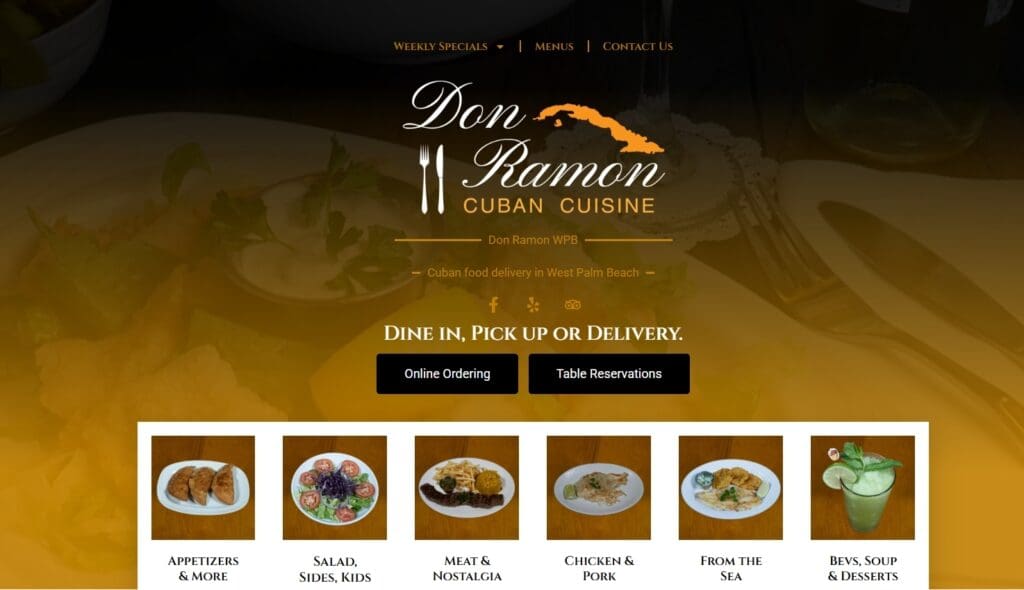The first time I wandered into Buena Vista, it wasn’t planned — it was one of those muggy Miami afternoons when you stumble into a place because the aroma yanks you off the sidewalk. One bite of ropa vieja, and I was hooked: it wasn’t just food; it felt like memory. Oddly, it reminded me of Sunday at my grandmother’s, despite us sharing only a love for heaping plates. This isn’t just about what’s on the plate: it’s about the pulse of Cuban comfort food and the way Miami’s neighborhoods keep it alive. Let’s dig in — literally and figuratively.
Why Cuban Comfort Food Hits Like Home (Even When It’s Not)
Stepping into Buena Vista, a neighborhood outpost known for serving up Authentic Cuban Comfort Food in a relaxed, casual setting, I didn’t expect to feel a rush of nostalgia. I’m not Cuban. My childhood dinners didn’t feature plantains or picadillo. Yet, as soon as I caught the aroma of simmering spices and slow-cooked meats, something clicked. It was arroz con pollo that did it—one bite, and I was transported to a memory I didn’t even know I had. That’s the magic of Cuban Cuisine: it’s comfort food that feels like home, even when it’s not your home.
The Universal Nostalgia of Arroz Con Pollo
There’s something about arroz con pollo—a humble dish of chicken and rice, seasoned with garlic, peppers, and saffron—that transcends borders. Maybe it’s the way the flavors meld together, or how the rice soaks up every drop of savory broth. For me, it was a reminder of family meals, laughter, and warmth, even though the ingredients were new. Research shows that Authentic Cuban Comfort Food is highly sought after in 2025, not just by those with Cuban roots, but by anyone craving the emotional connection that only comfort food can deliver.
Comfort food, after all, is about more than heritage. It’s about emotion—taste and memory intertwined. The Cuban Food Experience is built on this foundation. Whether you grew up in Havana or halfway across the world, a dish like arroz con pollo can feel like a hug from the inside out.
Signature Staples: Ropa Vieja, Picadillo, and the Best Cuban Sandwich
Of course, arroz con pollo is just the beginning. The Cuban Comfort Food Menu at Buena Vista reads like a greatest hits album of Cuban Cuisine:
- Ropa Vieja: Slow-cooked shredded beef in a tomato-rich sauce, often served with rice and black beans. It’s hearty, deeply flavorful, and a symbol of resilience and resourcefulness.
- Picadillo: Ground beef sautéed with onions, peppers, olives, and raisins. Sweet, savory, and a little tangy, it’s a dish that tells a story with every bite.
- Plantains: Fried sweet or savory, they’re the side dish that steals the show. Crispy on the outside, tender inside—impossible to eat just one.
- Croquetas: Creamy, crunchy, and perfect for sharing (or not). These bite-sized snacks are a staple on any Cuban Comfort Food Menu.
- The Cuban Sandwich: Layers of roast pork, ham, Swiss cheese, pickles, and mustard, pressed between crisp bread. It’s no wonder the Best Cuban Sandwich is a point of pride in every Cuban neighborhood eatery.
These dishes aren’t just popular—they’re celebrated for their cultural significance and rich flavors. Studies indicate that in 2025, classics like ropa vieja, picadillo, and the Cuban sandwich are more than menu items; they’re culinary ambassadors, connecting diners to Cuban heritage and hospitality.
Authenticity on a Plate: Tradition Meets Innovation
But what does “authentic” really mean when it comes to Cuban Cuisine? At Buena Vista, I noticed both old family recipes and inventive chef spins. Some dishes tasted like they’d been passed down for generations, while others surprised me with modern twists—think ropa vieja with a hint of smoked paprika, or plantains paired with unexpected sauces.
This blend of tradition and reinvention is what keeps the Cuban Food Experience vibrant. In cities like Miami, chefs are known for honoring classic Cuban ingredients while experimenting with new techniques. Sometimes, you get both on one fork—a bite that’s rooted in history, yet fresh and exciting.
Chef Michelle Bernstein: “When you eat Cuban food, you’re tasting both history and heart in every bite.”
That sentiment rings true at Buena Vista. The atmosphere is casual, the prices are reasonable, and the food is honest. Whether you’re a regular or a first-timer, the sense of welcome is unmistakable. Local reviews echo this, often highlighting the quality of food, the relaxed setting, and the feeling of being part of something bigger than just a meal.
In the end, Authentic Cuban Comfort Food isn’t just about what’s on the plate. It’s about the experience—one that’s as much about heart as it is about heritage. And sometimes, that’s exactly what you need, no matter where you’re from.
Miami’s Neighborhood Cuban Cafes: More Than Just Another Eatery
If you want to understand the real heartbeat of Miami’s Cuban food culture, you have to step inside one of its neighborhood Cuban restaurants. Not the polished, tourist-facing spots with perfect signage and Instagrammable plates—though those have their place. I’m talking about the local outposts where the aroma of simmering black beans drifts out onto the sidewalk, and the clatter of domino tiles is as much a soundtrack as the salsa playing softly in the background.
My first real taste of this came at Buena Vista, a spot that’s become a fixture in Miami’s ever-evolving Cuban food scene. It’s not just about the food, though the food is reason enough to return. It’s about the sense of community, the lived-in feel, and the stories that unfold at every table. Research shows that the best Cuban restaurants are often found in culturally rich neighborhoods like Little Havana, but Buena Vista and its peers—Puerto Sagua, Café La Trova—prove that Cuban comfort food can thrive in any corner of the city, as long as the spirit is right.
Where Food and Community Intersect
One afternoon, I found myself squeezed onto a counter stool between a local musician and an older gentleman who looked like he’d been coming here for decades. The musician, guitar case at his feet, leaned over and whispered, “You have to try the black beans. My abuela swears they use her secret.” We laughed, and within minutes, he was telling me about the subtle differences between his grandmother’s recipe and what was on my plate. It’s these random, genuine moments that make Neighborhood Cuban Restaurant Reviews so glowing. People aren’t just reviewing the food—they’re reviewing the feeling.
Carlos Frias, a respected food writer, once said,
“Good Cuban food can turn strangers into familia in a single afternoon.”
I felt that truth in the easy camaraderie around me. At Buena Vista, as in so many of Miami’s Cuban restaurants, the line between customer and family blurs. It’s not unusual to see birthday dances break out in the middle of the dining room, or a heated domino match unfold at the next table. The staff might greet regulars by name, and newcomers are quickly folded into the mix.
Cuban Cafes as Community Hubs
These neighborhood spots aren’t just eateries—they’re gathering spaces. Research indicates that local Cuban food spots are frequently reviewed positively for their authentic atmosphere, flavorful dishes, and reasonable prices. The décor might be simple, the plates sometimes mismatched, but the energy is unmistakable. It’s a relaxed, casual setting where you might get a plate with a thumbprint on the rim, but no one cares because the flavor more than makes up for it.
- Ambiance: Warm, bustling, and unpretentious. The kind of place where you can linger over a cortadito without feeling rushed.
- Food Quality: Dishes like ropa vieja, picadillo, and plantains are prepared with care, sticking close to tradition while occasionally surprising you with a twist.
- Value: Portions are generous, prices are fair, and you leave full—both in body and spirit.
The Quirks That Make Each Spot Unique
Every Miami Cuban café has its quirks. At Buena Vista, it’s the way the staff remembers your favorite pastelito. At Puerto Sagua, it’s the old-school diner vibe and the stories that seem to live in the walls. Café La Trova, meanwhile, is known for its unbeatable café cubano and live music that spills into the night. These details show up again and again in Neighborhood Cuban Restaurant Reviews, with diners praising not just the food, but the experience as a whole.
The best Cuban food in Miami isn’t always about the most perfectly pressed sandwich or the fanciest plating. It’s about authenticity—about recipes passed down through generations, about the laughter and conversation that fill the room, and about the comfort of knowing you’re always welcome. In 2025, as Cuban food trends lean into both tradition and innovation, these neighborhood cafes remain the backbone of Cuban Food Culture in Miami.
Whether you’re a local or just passing through, stepping into one of these Cuban restaurants is like being invited into someone’s home. The food is hearty, the atmosphere is real, and the sense of belonging is immediate. That’s the magic that keeps people coming back—and the reason why, in Miami, a neighborhood Cuban café is always more than just another eatery.
A Glimpse at the Cuban Comfort Food Menu: Classics, Surprises & 2025 Trends
Stepping into Buena Vista’s neighborhood outpost, I was greeted by the kind of warmth that only authentic Cuban comfort food can inspire. The setting was relaxed, the aroma unmistakable—garlic, slow-roasted meats, and the subtle sweetness of plantains. This wasn’t just any restaurant; it was a local institution, a place where regulars greet the staff by name and newcomers, like me, are welcomed with open arms. As I scanned the Cuban Comfort Food Menu, I realized I was about to embark on a culinary journey that would blur the lines between tradition and innovation.
My adventure began with a bit of linguistic bravado. I tried ordering in broken Spanish, hoping to impress or at least amuse my server. Instead, I stumbled into an unexpected opportunity: the chef, hearing my earnest attempt, appeared tableside and offered me a special dish not listed on the menu. Before I knew it, I was whisked into the kitchen for a quick tour—a behind-the-scenes look at the heartbeat of Cuban cuisine. The experience was as much about the people as the food, and it set the tone for everything that followed.
The heart of any Cuban food menu is its staples. Empanadas, croquetas, and the ever-reliable Cuban sandwich are non-negotiable. Each bite of the sandwich—crisp bread, savory ham, roast pork, Swiss cheese, pickles, and mustard—reminded me why this dish is celebrated far beyond Miami. Yet, what stood out most was how the kitchen balanced these classics with new twists. Research shows that Cuban Food Trends 2025 are all about blending traditional flavors with modern presentations. At Buena Vista, this meant seeing the Cuban sandwich reimagined with artisanal breads or unexpected fillings, and empanadas served with vibrant, globally inspired sauces.
It’s a delicate dance: honoring the past while embracing the future. As Executive Chef Eileen Andrade put it,
“When you preserve tradition but don’t fear reinvention, every meal tells a new chapter.”
Her words echoed in every plate that arrived at my table. The picadillo was rich and comforting, just as it should be, but plated with a contemporary flair. The rice and beans, a humble staple, were elevated with subtle spices and a drizzle of herb oil. Even the croquetas, typically simple, were given a modern twist with unique fillings that hinted at global influences.
2025’s Cuban food scene is defined by this willingness to experiment. Studies indicate that while diners crave authenticity, they also appreciate creative plating and new flavor combinations. Buena Vista’s menu reflected this beautifully. There were nods to tradition—ropa vieja, lechon asado, and maduros—but also playful surprises. I spotted a “deconstructed” arroz con pollo and a vegan take on the classic Cuban sandwich, both drawing curious glances and eager orders from nearby tables.
And then, there was dessert. In Cuban cuisine, sweets are never an afterthought. Azucar Ice Cream, a local favorite, featured prominently on the menu. I opted for the guava ice cream, which, in my opinion, should be city-mandated. Its creamy texture and bright, tropical flavor were the perfect finish to a meal that celebrated both heritage and innovation. It’s no wonder that research highlights the importance of dessert in Cuban dining—unexpected treats like these can easily steal the show, especially in Miami’s ever-adaptable food scene.
Dining at Buena Vista, I realized that the Cuban Comfort Food Menu is more than a list of dishes—it’s a living, evolving story. The best Cuban food menu items honor the recipes handed down through generations, yet aren’t afraid to surprise. In 2025, this means keeping the classics front and center while embracing new ideas, creative presentations, and global influences. The result is a dining experience that feels both familiar and fresh, rooted in tradition but always looking forward.
As I left, I couldn’t help but feel grateful for my accidental kitchen tour and the off-menu chef’s special. Sometimes, the best discoveries happen when you step outside your comfort zone—linguistically or otherwise. Buena Vista’s blend of classic Cuban dishes and inventive new offerings proves that comfort food can still surprise us, even as it brings us home.
TL;DR: Neighborhood Cuban restaurants blend tradition and innovation, serving more than food — they offer a sense of belonging seasoned with nostalgia.




